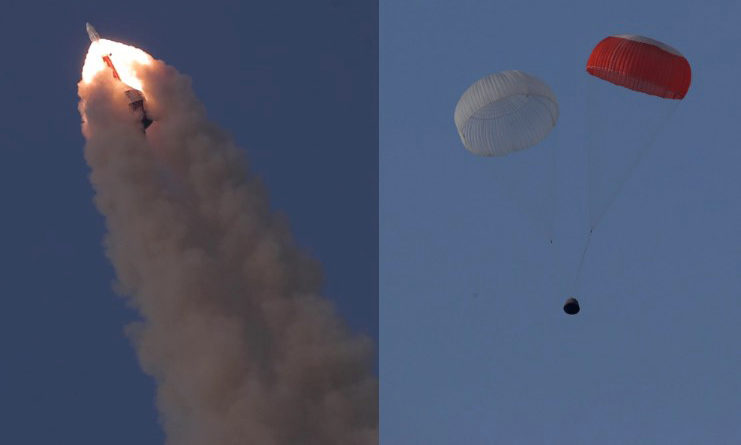India’s Manned Spaceflight Plan Gets Boost With Astronaut Escape Feature Trial
New Delhi, Jul 06, 2018
Moving a step forward in its plan towards launching a manned spacecraft in the near future, the Indian Space Research Organisation (ISRO) on Thursday successfully tested the Crew Escape System for its experimental capsule simulating an emergency pad abort situation.
“ISRO carried out a major technology demonstration July 05, 2018, the first in a series of tests to qualify a Crew Escape System, which is a critical technology relevant for human spaceflight,” ISRO said in a statement.
The Crew Escape System along with the simulated crew module with a mass of 12.6 tons, lifted off at 07.00 AM (Indian Standard Time) at the opening of the launch window from its pad at Satish Dhawan Space Centre, Sriharikota and reached an altitude of nearly 2.7 km under the power of its seven specifically designed quick acting solid motors to remove the crew module to a safe distance without exceeding safe g-levels, according to the ISRO statement.
“The test was over in 259 seconds, during which the Crew Escape System along with crew module soared skyward, then arced out over the Bay of Bengal and floated back to Earth under its parachutes about 2.9 km from Sriharikota,” ISRO added.
The ISRO employed nearly 300 sensors to record various mission performance parameters during the test flight. Three recovery boats are being used to retrieve the module as part of the recovery protocol.
The ISRO has been testing the indigenous capability to launch a human space flight in future, though the plan is pending approval by the government.
On 18 December 2014, the ISRO conducted the most high-profile test of the project, named Crew Module Atmospheric Re-entry Experiment (CARE), wherein the crew module was separated from the launch vehicle at an altitude of 126 km, re-entered the earth’s atmosphere at about 80 km and descended further in ballistic mode. The external configuration of the crew module was the same as that of a manned flight.
The ISRO’s former scientists were of the opinion that the space agency should prepare for a manned mission, as the country should aspire to bring resources like Helium from space.
The Chandrayan-2 (Moon Mission-2), which is scheduled to be launched in October this year, will explore the south side of the moon to find traces of water and Helium-3, an isotope crucial for the development of fusion energy on earth.
Source: Sputnik News

